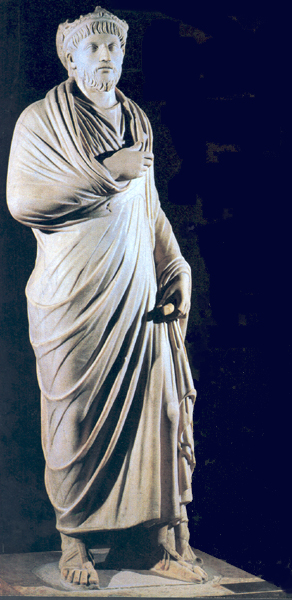Image Details

Erich Lessing
The Emperor Julian (ruled 361–363 C.E.), the only pagan emperor after Constantine (ruled 306–337), adopts a scholarly pose in this fourth-century marble statue, now in the Louvre. Julian’s dislike of Christianity—because of its claim that it alone was the true religion—earned him the sobriquet “apostate” and the enmity of Christians throughout the Roman Empire. But Julian’s hostility did not extend to Judaism: He admired the Jews’ ancient forms of worship and their god, Yahweh, whom Julian called “most powerful and most good.”
Julian wanted to add the Jewish god to his pagan pantheon and to end the centuries-long suffering of Jewish communities under Roman rule. Their burdens included the destruction of the Jerusalem Temple in 70 C.E., and their banishment from Palestine after the Second Jewish Revolt (the Bar-Kokhba Revolt) in 135. Jews in the empire were also subject to special restrictions and taxes—which Julian sought to alleviate.
As part of this rapprochement with the Jews, Julian planned to restore their Temple “in honor of the god [Yahweh] whose name has been associated with it.” Work on the Temple’s restoration apparently began (see inscription), though Julian’s death soon thereafter in his Persian wars brought an end to the project.
